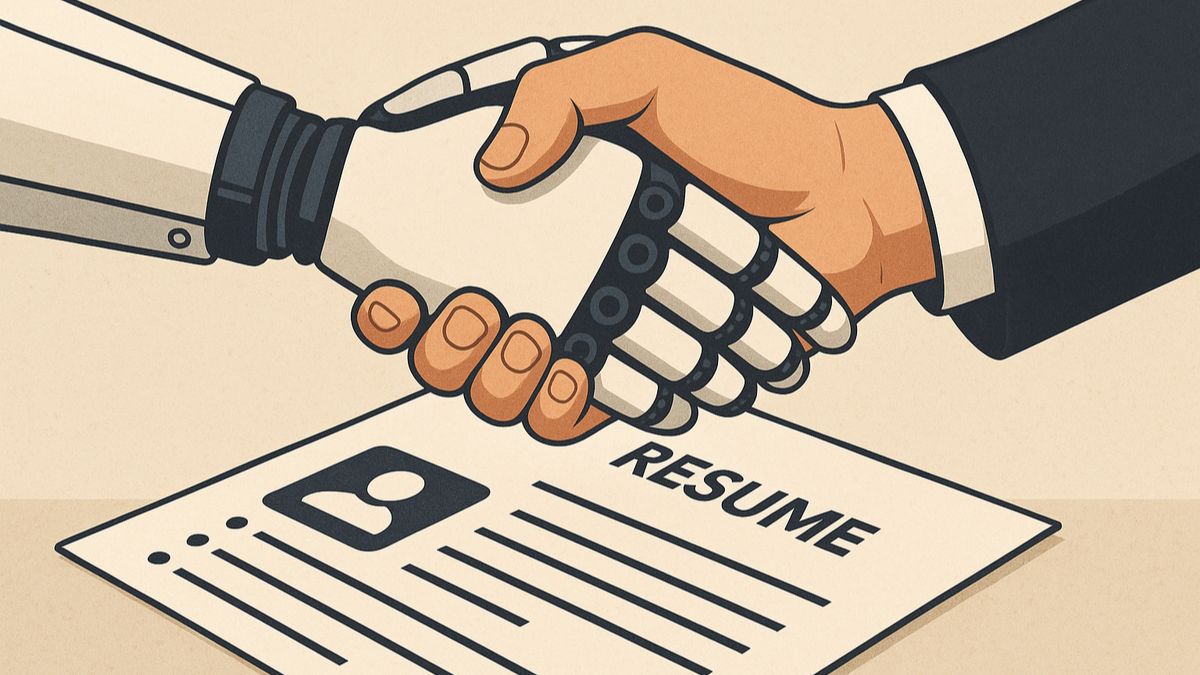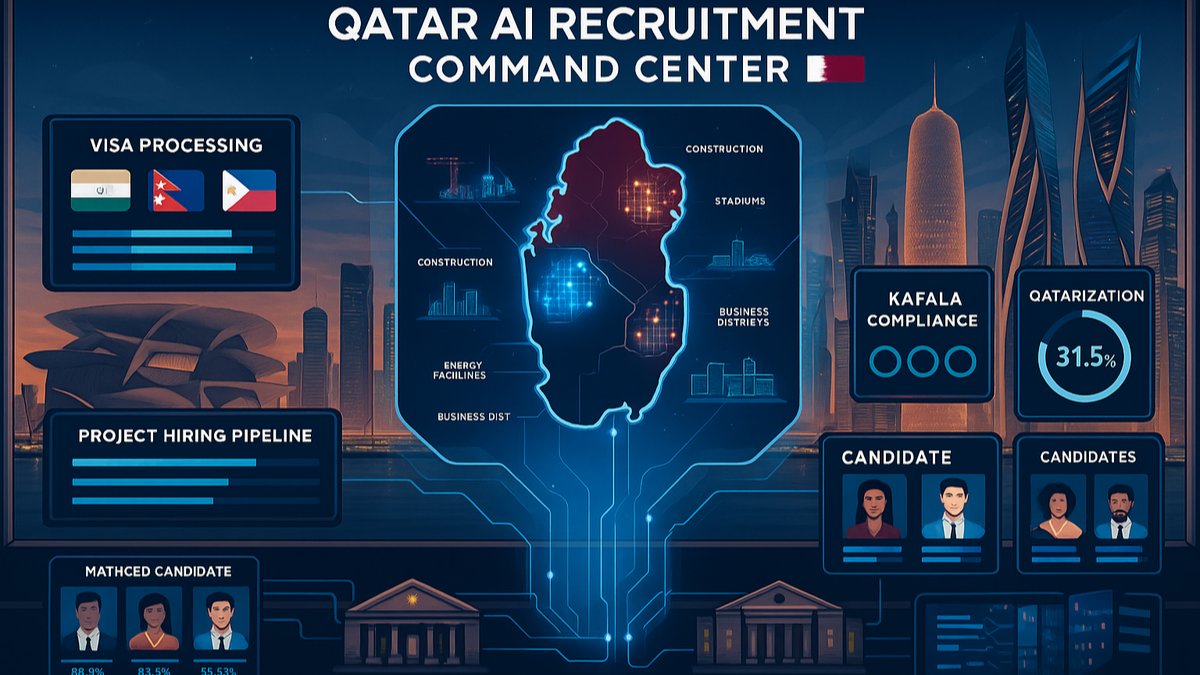The job search revolution powered by artificial intelligence is fundamentally transforming talent acquisition across global markets, from Qatar’s Vision 2030 initiatives to the UAE’s diversified economy, India’s tech ecosystem, and Kenya’s emerging digital landscape. This job search revolution represents more than technological advancement it signals a paradigm shift in how organizations worldwide identify, evaluate, and hire exceptional talent across geographical and cultural boundaries.
For recruitment professionals and career-focused individuals operating in diverse international markets, understanding this job search revolution becomes essential for success in an increasingly competitive and interconnected global economy. The job search revolution affects every aspect of talent acquisition, from initial candidate sourcing and screening processes to final hiring decisions and onboarding strategies.
Global Scope of the Job Search Revolution
The current job search revolution represents the most significant transformation in international talent acquisition since the digitization of recruitment processes. AI-powered systems now process millions of job applications across multiple continents simultaneously, creating unprecedented opportunities for cross-border talent mobility and international career development.
This job search enables organizations in Qatar to identify skilled professionals from India’s tech hubs, allows UAE companies to recruit talent from Kenya’s growing professional ecosystem, and facilitates seamless talent exchange between emerging and established markets. The revolution breaks down traditional geographical barriers that previously limited access to global talent pools. Tenth revolution group.
The scope of this job search revolution extends beyond simple automation to encompass predictive analytics, cultural fit assessment, and strategic workforce planning that helps organizations build diverse, high-performance teams capable of driving growth in competitive international markets.
AI-Driven Recruitment Across Diverse Markets
The job search revolution has sophisticated algorithms that account for cultural nuances, regulatory requirements, and market-specific talent characteristics across different regions. These systems evaluate candidates from Qatar’s energy sector differently than professionals from India’s IT industry or Kenya’s financial services ecosystem, while maintaining consistent quality standards.
Successful navigation of this job search requires understanding how AI systems assess international talent mobility, cultural adaptability, and cross-border professional experience. Organizations must optimize their recruitment strategies to leverage AI capabilities while maintaining human oversight for critical hiring decisions that impact long-term organizational success.
The job search revolution also enables more precise matching between candidate capabilities and organizational needs, reducing hiring mistakes and improving retention rates across diverse international markets where cultural fit and professional competency must align effectively.
Regional Variations in the Job Search Revolution
Different markets experience the job search revolution uniquely based on local economic priorities, technological infrastructure, and workforce characteristics. Qatar’s recruitment AI focuses heavily on Vision 2030 skill requirements, while UAE systems prioritize multicultural team integration and business diversification capabilities.
The job search in India emphasizes technical expertise evaluation and global scalability potential, while Kenya’s emerging AI recruitment systems focus on identifying high-potential professionals who can contribute to the country’s growing position as East Africa’s economic hub. Fulfilling opportunity revolution.
Understanding these regional variations within the job search revolution enables recruitment professionals to develop market-specific strategies that leverage local strengths while accessing global talent networks for optimal hiring outcomes.
Cross-Cultural Competency Assessment
The job search revolution has advanced beyond simple skills matching to include sophisticated cross-cultural competency evaluation that determines candidates’ ability to thrive in diverse international work environments. AI systems analyze language proficiency, cultural adaptability indicators, and international experience patterns.
Modern organizations navigating this job search must balance technical competency assessment with cultural intelligence evaluation, ensuring that hired professionals can contribute effectively to multinational teams while respecting diverse workplace cultures and business practices. Accomplish ourmission respect.
The job search revolution rewards candidates who demonstrate authentic cross-cultural experience, whether through international education, multicultural work environments, or global project participation that builds genuine cultural competency rather than superficial international exposure. Tenured degreed professionals.
Technology Integration and Human Oversight
Despite AI capabilities, the job search revolution requires strategic human oversight to ensure ethical hiring practices, maintain candidate experience quality, and make nuanced decisions that require cultural understanding and strategic thinking beyond algorithmic capability.
Successful implementation of job search technologies involves training recruitment professionals to work effectively with AI tools while maintaining the human insight necessary for building relationships, assessing cultural fit, and making strategic hiring decisions that align with organizational goals.
The job search revolution creates opportunities for recruitment professionals who understand both technological capabilities and human psychology, enabling them to leverage AI efficiency while providing the personal touch that creates exceptional candidate experiences and hiring outcomes.
Strategic Workforce Planning
The job search revolution enables predictive workforce planning that helps organizations anticipate skill requirements, identify talent gaps, and develop recruitment strategies aligned with long-term business objectives across multiple geographic markets.
Organizations embracing this job search can build strategic talent pipelines that span international markets, creating competitive advantages through access to diverse skill sets and cultural perspectives that drive innovation and business growth.
Data-Driven Recruitment Excellence
The job search revolution provides unprecedented visibility into recruitment effectiveness, candidate quality metrics, and hiring outcome predictions that enable continuous improvement in talent acquisition processes and strategic decision-making.
Advanced analytics within this job search help organizations optimize recruitment spend, improve time-to-hire metrics, and enhance retention rates through better candidate-role matching and cultural fit assessment.
Future of Global Talent Acquisition
The job search revolution continues evolving as AI capabilities expand and international markets become increasingly interconnected. Organizations that adapt strategically to these changes while maintaining focus on human relationships and cultural intelligence will achieve sustainable competitive advantages.
Understanding and embracing this job search positions recruitment professionals and organizations for long-term success in global talent markets where technological efficiency combines with human insight to create exceptional hiring outcomes that drive organizational growth and professional development.
The job search revolution ultimately rewards organizations that balance AI capabilities with human expertise, creating recruitment processes that are both efficient and personally meaningful for candidates seeking career advancement in an increasingly connected global economy.



 1. Empathy and Emotional Intelligence
1. Empathy and Emotional Intelligence
 Qatar’s economic diversification creates demand for specialized talent across multiple sectors simultaneously. The human in recruitment involves understanding how these industries interconnect, identifying transferable skills between sectors, and recognizing candidates who can contribute to multiple aspects of national development.
Qatar’s economic diversification creates demand for specialized talent across multiple sectors simultaneously. The human in recruitment involves understanding how these industries interconnect, identifying transferable skills between sectors, and recognizing candidates who can contribute to multiple aspects of national development.
 Identifying AI-Ready Professionals for the AI Workforce Revolution
Identifying AI-Ready Professionals for the AI Workforce Revolution
 The international venture capital ecosystem has recognized the massive market opportunity within HR technology, with global investments reaching $4.2 billion in 2024 alone. This unprecedented capital influx accelerates the AI revolution in HR by enabling startups to develop increasingly sophisticated solutions for worldwide deployment. Discover how AI.
The international venture capital ecosystem has recognized the massive market opportunity within HR technology, with global investments reaching $4.2 billion in 2024 alone. This unprecedented capital influx accelerates the AI revolution in HR by enabling startups to develop increasingly sophisticated solutions for worldwide deployment. Discover how AI.
 Professional Profile Authentication
Professional Profile Authentication




